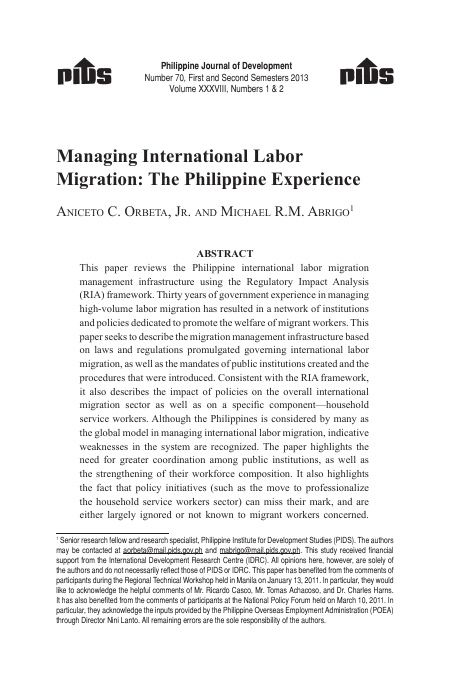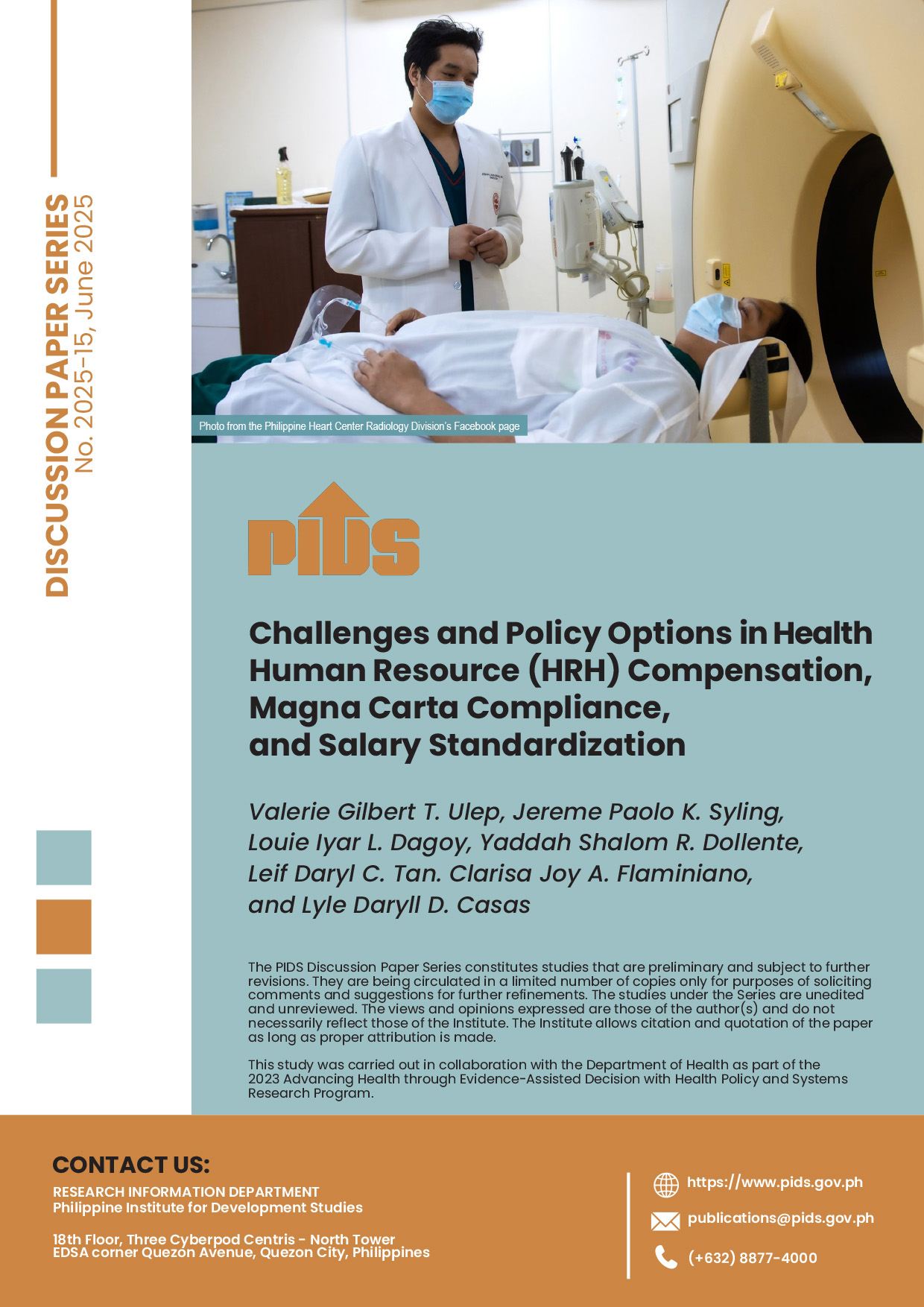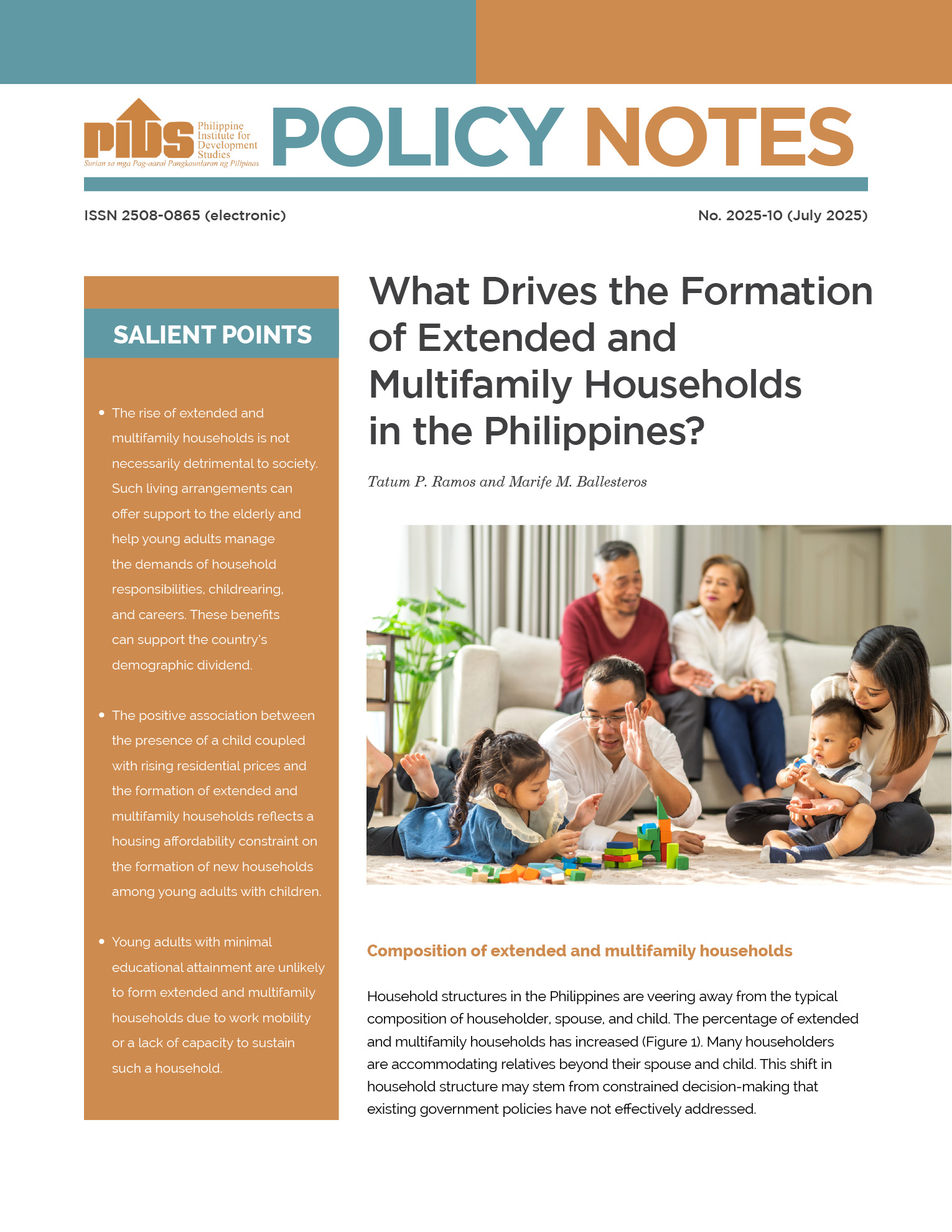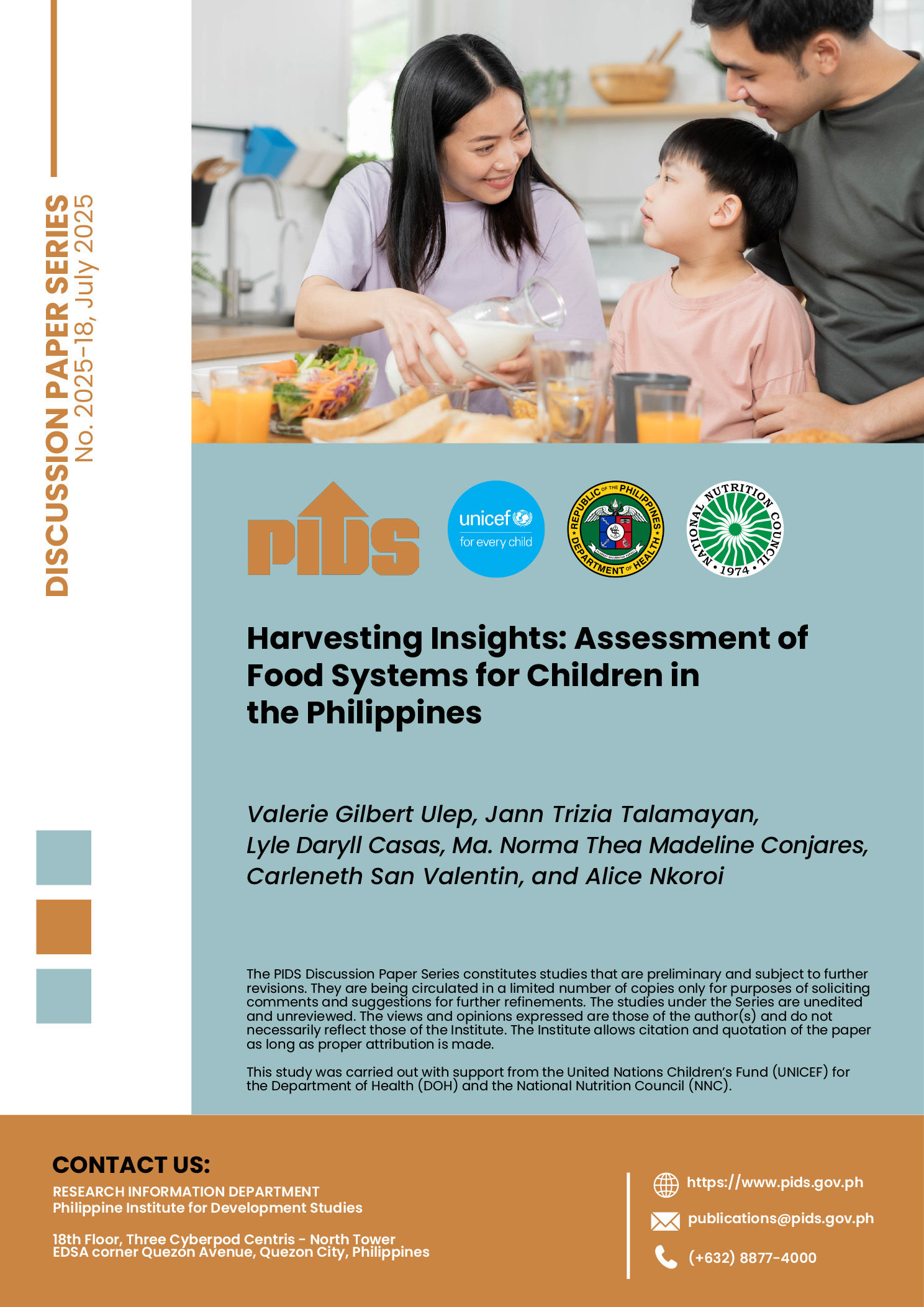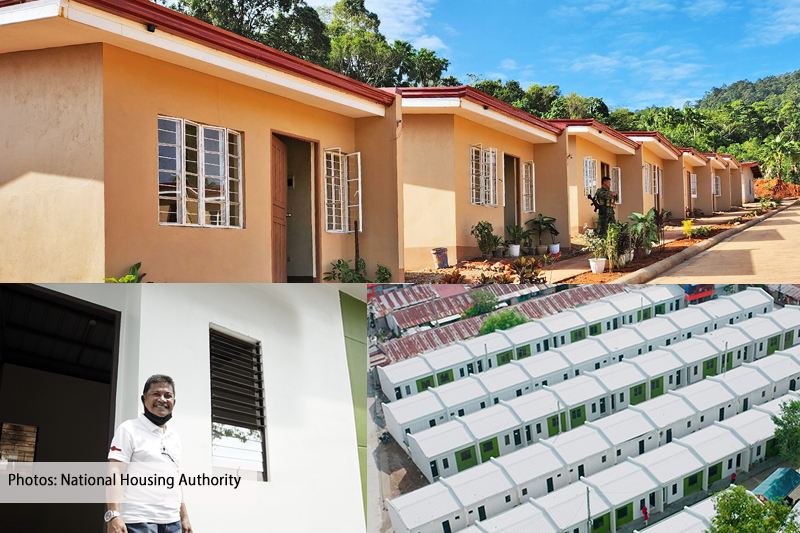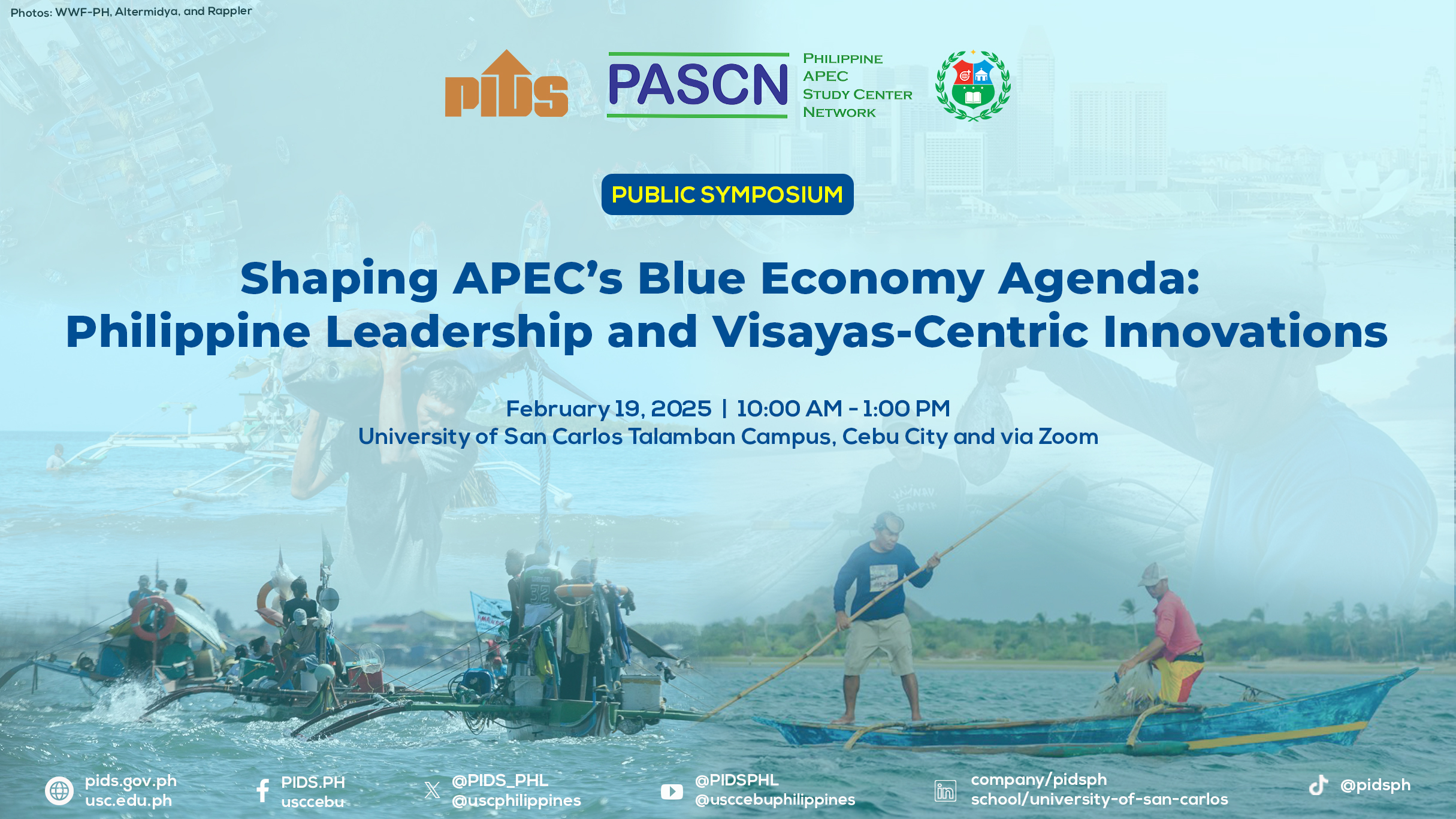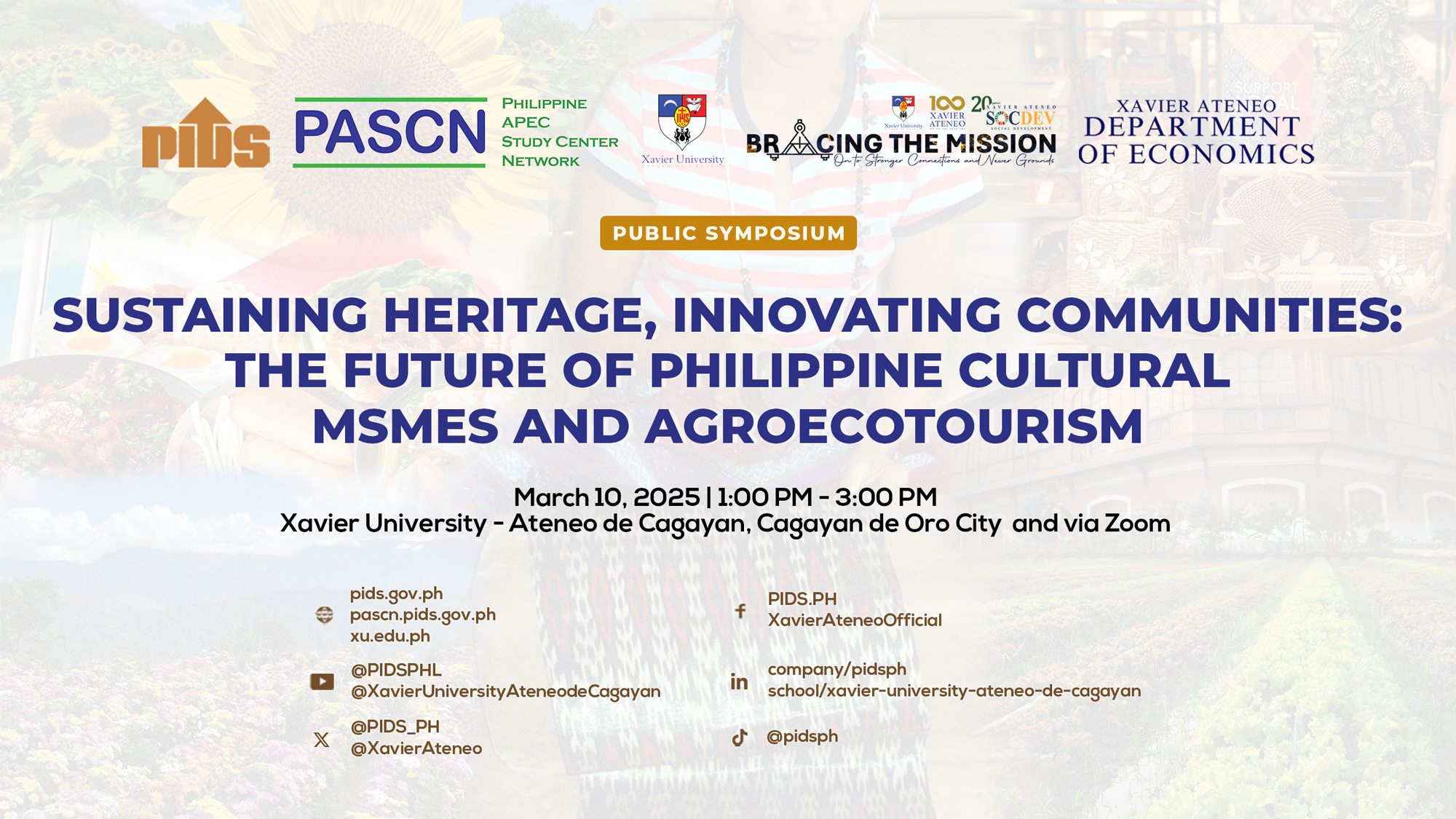This paper reviews the Philippine international labor migration management infrastructure using the Regulatory Impact Analysis (RIA) framework. Thirty years of government experience in managing high-volume labor migration has resulted in a network of institutions and policies dedicated to promote the welfare of migrant workers. This paper seeks to describe the migration management infrastructure based on laws and regulations promulgated governing international labor migration, as well as the mandates of public institutions created and the procedures that were introduced. Consistent with the RIA framework, it also describes the impact of policies on the overall international migration sector as well as on a specific component--household service workers.
Although the Philippines is considered by many as the global model in managing international labor migration, indicative weaknesses in the system are recognized. The paper highlights the need for greater coordination among public institutions, as well as the strengthening of their workforce composition. It also highlights the fact that policy initiatives (such as the move to professionalize the household service workers sector) can miss their mark, and are either largely ignored or not known to migrant workers concerned.
Citations
This publication has been cited 2 times
- Deluna, Roperto Jr. 2014. Analysis of pull-factor determinants of Filipino International Migration. MPRA Paper 60156. University Library of Munich, Germany.
- Orbeta, Aniceto, Jr. and Kathrina Gonzales. 2013. Managing international labor migration in ASEAN : Themes from a six-country study. Governance Working Papers 23422. East Asian Bureau of Economic Research.

